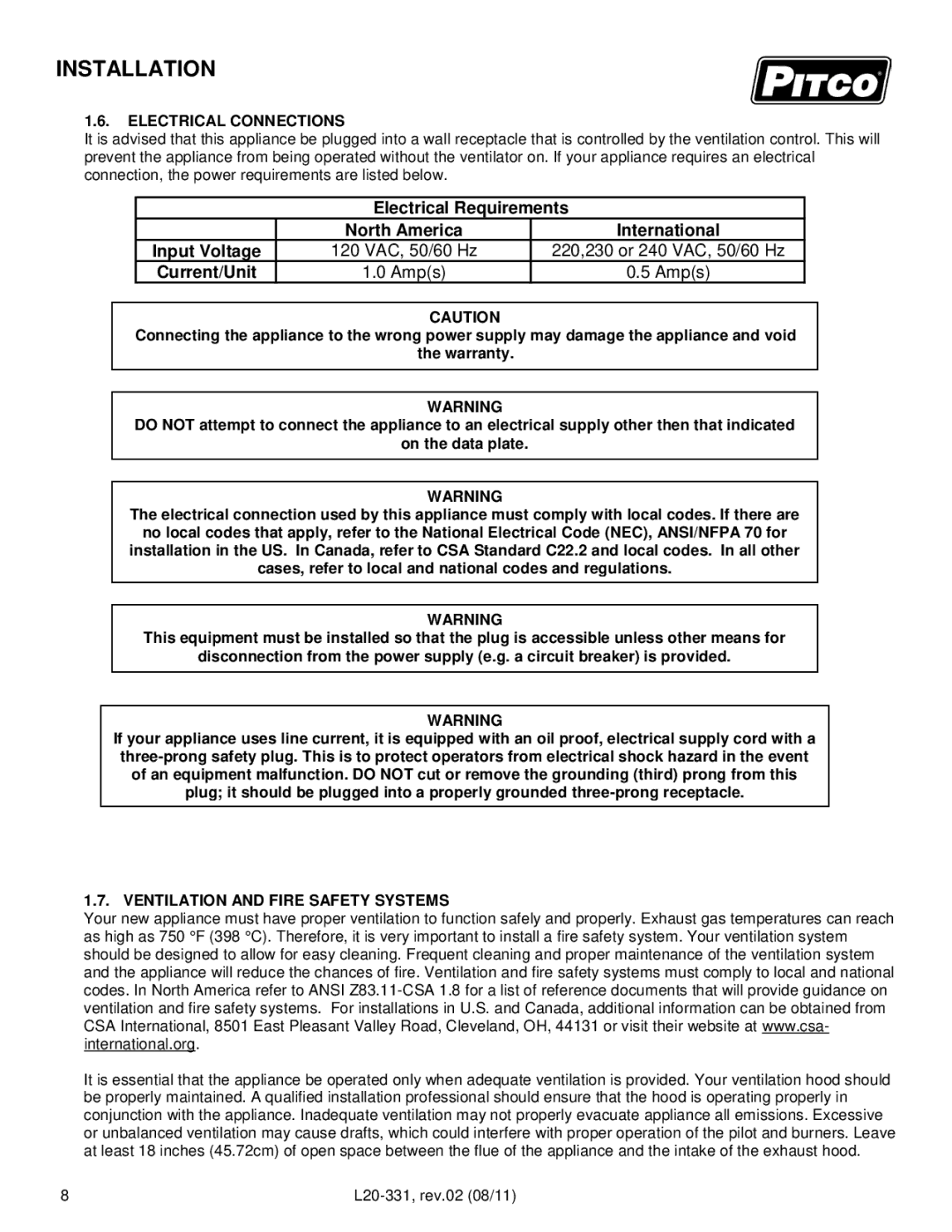SSPG14, SSRS14 specifications
The Pitco Frialator SSRS14 and SSPG14 are state-of-the-art commercial frying solutions designed for restaurants and food service establishments that prioritize efficiency, safety, and frying quality. These fryers are engineered to handle high-volume frying needs while delivering consistent results.One of the standout features of the SSRS14 is its four-pan capability, allowing for a substantial amount of food to be fried simultaneously. This model is built for versatility, catering to various food items from crispy fries to perfectly fried chicken. The SSPG14, on the other hand, comes with a single fry pot but boasts a higher frying capacity, making it ideal for establishments that require flexibility without compromising on output.
Both models are equipped with advanced temperature control systems. The computerized control panel ensures precise temperature regulation, enhancing cooking efficiency and food quality. The oil management system is another highlight, which helps maintain optimal oil quality over longer periods. This not only reduces oil wastage but also improves the flavor profile of the fried products.
The fryers feature Pitco’s renowned frying oil filtration system, which extends the life of the oil. By efficiently removing food particles and other impurities, this technology contributes to both cost savings and enhanced food quality. Additionally, the SSRS14 and SSPG14’s stainless steel construction ensures durability and resistance to corrosion, promising longevity even in the face of heavy usage.
Safety is a top priority with both models. They come equipped with built-in safety features, including high-temperature limit switches that prevent overheating and potential hazards. The design also incorporates easy-access oil drainage systems for straightforward cleaning and maintenance, ensuring health standards are met effortlessly.
In terms of energy efficiency, the SSRS14 and SSPG14 utilize advanced heating technologies that require less energy while providing quick recovery times. This not only lowers operational costs but also contributes to a more sustainable kitchen environment.
In summary, the Pitco Frialator SSRS14 and SSPG14 are exceptional choices for food service operations looking to enhance their frying capabilities. Their combination of user-friendly features, advanced technology, and safety measures makes them indispensable assets for any commercial kitchen aiming to deliver high-quality fried foods consistently.

